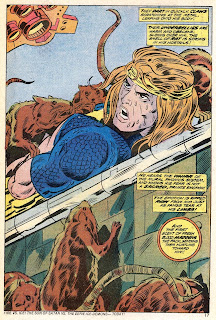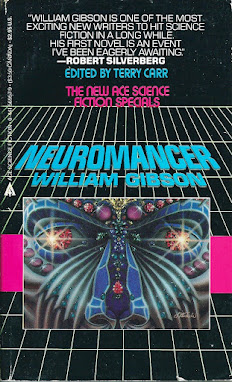5 / 5 Stars
This Del Rey paperback edition (218 pp.) was published in 1976, and features a cover illustration by Murray Tinkleman.
It’s 1997, and the Earth space fleet has discovered a network of wormholes- ‘collapsars’ – that permit instantaneous travel from one region of the galaxy to another location thousands of light-years distant. The problem is, spaceships of an alien race, known as the Taurans, also use the collapsars, and they have destroyed a Terran vessel.
It’s 1997, and the Earth space fleet has discovered a network of wormholes- ‘collapsars’ – that permit instantaneous travel from one region of the galaxy to another location thousands of light-years distant. The problem is, spaceships of an alien race, known as the Taurans, also use the collapsars, and they have destroyed a Terran vessel.
In response, the United Nations goes on war footing and William Mandella, a college physics major, is drafted into the Army.
Because travel to the collapsars and the strategic planets located in proximity to them takes place at near-light velocities, combat missions may occupy a year or so of shipboard time. However, back on Earth, decades can pass relative to shipboard time. Consequently, one of the main plot devices of ‘War’ deals with the disorientation and anomie Mandella and his fellow soldiers experience when they return to a greatly changed Earth upon completion of a combat mission.
As the war progresses, the likelihood of survival for an individual soldier becomes smaller and smaller. Can Mandella survive these almost impossible odds ? Will the Taurans be vanquished ? As the years unfold, will Mandella even recognize the Earth that he is fighting to protect ?
I first read ‘The Forever War’ in 1975, and read it several more times during the 70s. It was one of the better novels to see print in the New Wave era. Despite being very engaging and well-written, the novel was something of an anomaly for its time (it did receive the Hugo award in 1976).
Its prose is very spare and direct, and lacks any of the stylistic contrivances that marked so many other novels of the New Wave era. The first-person narrative is entirely in the present tense; there are no flashbacks lasting longer than a few sentences; there are no lengthy and overwritten expositions on the main character’s mental state, as might be expected of a New Wave novel dealing with the military and violence. The ‘hard’ science aspects of the book are carefully worked into the text, and serve to enhance the story without clogging it with overly technical descriptions.
‘Forever War’ is first and foremost a great SF adventure story. The antiwar aspects of the novel are understated and derive not from a polemical stance on the part of author Haldeman, but more from the inclusion of little vignettes and plot twists that signal the author’s familiarity with combat in the ‘real world’ (Haldeman was drafted, and saw combat, in the Viet Nam war). Fellow soldiers die from blunders in training; they are killed or mutilated by friendly fire; tactical mistakes by the commanding authority are depressingly frequent; and the ‘grunts’ in the trenches only have an incomplete understanding of what they are doing, and why they are doing it.
Thirty-five years after it first appeared, ‘Forever War’ remains one of the best SF novels yet written about future combat.
Haldeman wrote two novels in the 90s that are more or less related to ‘War’; ‘Forever Peace’ (1998) deals with a near-future war on Earth in which remotely-controlled androids perform the combat. ‘Forever Free’ (1999) is a sequel proper, featuring the further adventures of William Mandela.
Because travel to the collapsars and the strategic planets located in proximity to them takes place at near-light velocities, combat missions may occupy a year or so of shipboard time. However, back on Earth, decades can pass relative to shipboard time. Consequently, one of the main plot devices of ‘War’ deals with the disorientation and anomie Mandella and his fellow soldiers experience when they return to a greatly changed Earth upon completion of a combat mission.
As the war progresses, the likelihood of survival for an individual soldier becomes smaller and smaller. Can Mandella survive these almost impossible odds ? Will the Taurans be vanquished ? As the years unfold, will Mandella even recognize the Earth that he is fighting to protect ?
I first read ‘The Forever War’ in 1975, and read it several more times during the 70s. It was one of the better novels to see print in the New Wave era. Despite being very engaging and well-written, the novel was something of an anomaly for its time (it did receive the Hugo award in 1976).
Its prose is very spare and direct, and lacks any of the stylistic contrivances that marked so many other novels of the New Wave era. The first-person narrative is entirely in the present tense; there are no flashbacks lasting longer than a few sentences; there are no lengthy and overwritten expositions on the main character’s mental state, as might be expected of a New Wave novel dealing with the military and violence. The ‘hard’ science aspects of the book are carefully worked into the text, and serve to enhance the story without clogging it with overly technical descriptions.
‘Forever War’ is first and foremost a great SF adventure story. The antiwar aspects of the novel are understated and derive not from a polemical stance on the part of author Haldeman, but more from the inclusion of little vignettes and plot twists that signal the author’s familiarity with combat in the ‘real world’ (Haldeman was drafted, and saw combat, in the Viet Nam war). Fellow soldiers die from blunders in training; they are killed or mutilated by friendly fire; tactical mistakes by the commanding authority are depressingly frequent; and the ‘grunts’ in the trenches only have an incomplete understanding of what they are doing, and why they are doing it.
Thirty-five years after it first appeared, ‘Forever War’ remains one of the best SF novels yet written about future combat.
Haldeman wrote two novels in the 90s that are more or less related to ‘War’; ‘Forever Peace’ (1998) deals with a near-future war on Earth in which remotely-controlled androids perform the combat. ‘Forever Free’ (1999) is a sequel proper, featuring the further adventures of William Mandela.









































































